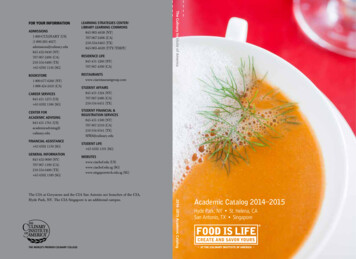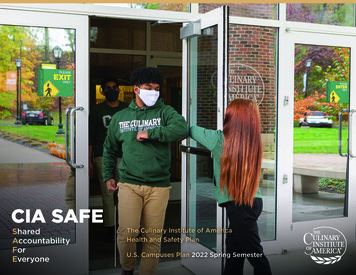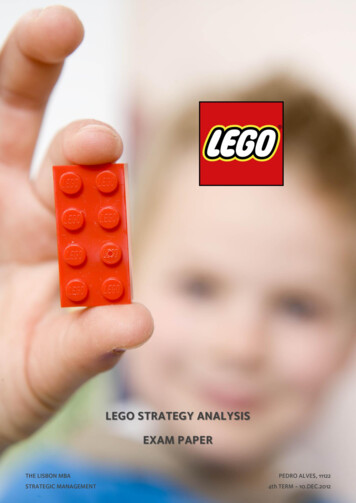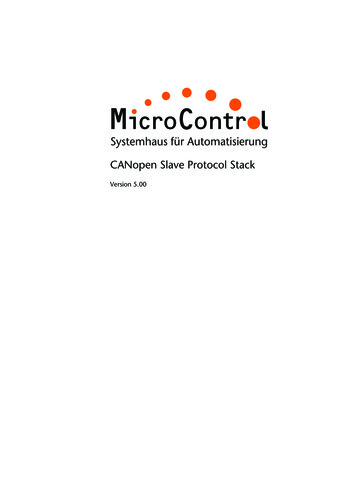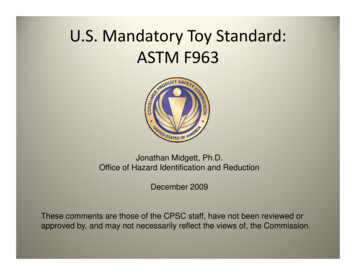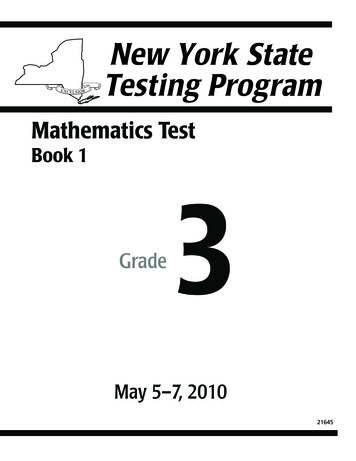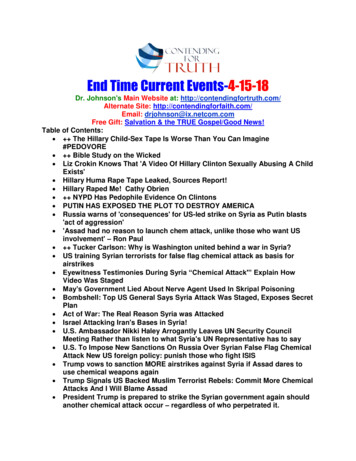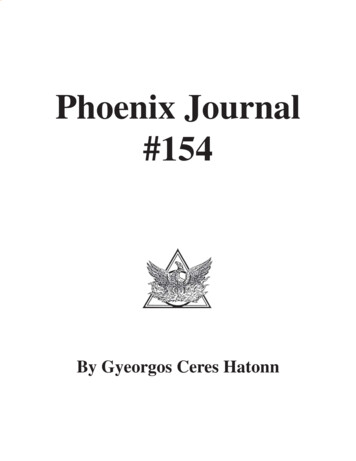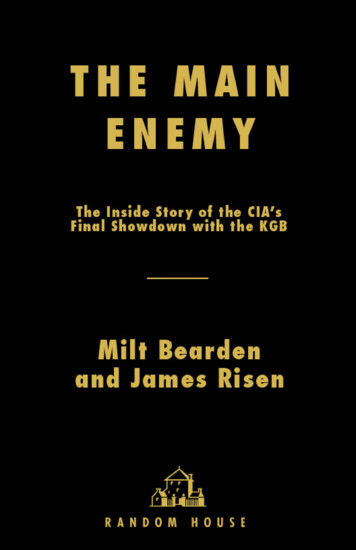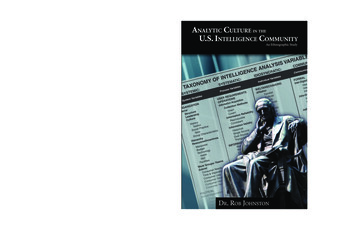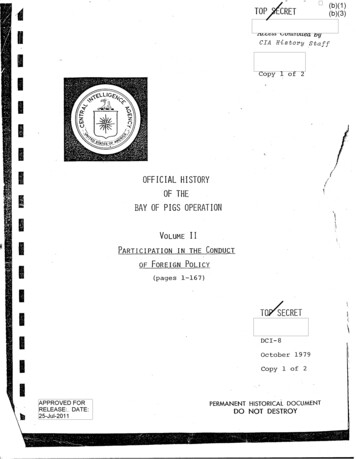
Transcription
D·. IIIIIIIIIIIIIIII.(b)(1)(b)(3)CIA HistoryCopy I of 2(OFFICIAL HISTORYf'OF THEBAY OF PIGS OPERATIONVOLUMEIIPARTICIPATION IN THE CONDUCTOF FOREIGN POLICY(pages 1-167)TOY{ECRETDCI-8October 1979Copy 1 of 2APPROVED FORRELEASEL DATE:25-Jul-2011PERMANENT HISTORICAL DOCUMENTDO NOT DESTROYI,\
I.".;. . ;.:"".':.'- - :UNCLASSIFIED when blank-TOP SECRET when attached to Top. fled when filled in form is"detached from controlle document.". 'DOCUMENT DESCRIPTIONSOURCECIA RistoStaffOFFICIAL HISTORY OF THEBAY OF PIGS OPERATIONDOC. NO.OCtober 19791 of 2OF P . GES 255Volurre. IIDOC. D.TECOpy NO,HUMBERParticipation in theConduct of Foreign PolicyNUMBER OF .TT . CHMENTSnoneATTENTION:. Thl& form urlll be placed On top 0/ and attached to each Top Secret document received bV the Central:"ltiieLZfg Agencv':'or cla&rified Top Secret within the CIA and will remain. attached to the document until such time a& It u downgrad. d.· destroi!ed. or:/tran.nnltted outside 0/ CIA. Acceu to Top Secret matter u limited to Top Secret Control personnel and those Indivldual& Whose .offictal,'dutle& relate to the matter. Top Secret Control Officer& who receive and/or release the attached Top Secret material will sign this /orm·"and indicate period 0/ custodv in the left-hand column& pr9vided. Each individual who sees the Top Secret document .wlll rign andIndicate the date 0/ handling in the right-hand columns.OFFICERELEASEDRECEIVEDREFERRED TOSIGNATURED. TEDATETIMETIMESEEN BYSIGNATUREOFF ICE/o'l V.NOTICE OF DETACHMENT: When this form is detached from Top'Secret material it shall be completed In the appropriate spacesand transmitted to Central Top Secret Control/or record.DOWNGRADED(Signature)tED. TEDISPATCHEDDESTROYED'BY (Signature)TOWITNESSED BY (Signature)BY (Signature)(OUTSIDE CIA)
IIIIII,IIIIIIIIIII
FOREWORDNearly 20 years have elapsed since the Agencywas authorized by President Eisenhower to undertakea program of covert action to overthrow Fidel Castro,but despite voluminous writings subsequent to theactivity intending to show the disastrous nature ofCIA's guidance of the operation, no attention everhas focused on the Agency's participatory role inthe formulation of United States foreign policy visa-vis Guatemala and Nicaragua during the course ofthe operation.One purpose of this volume in theOfficial History of the Bay of Pigs series is toexamine in detail the extent of those relationshipsas they impacted on -- or in fact became -- thepolicies of the United States government toward thosetwo countries.In Guatemala, the Agency dealt directly withthe President Miguel Ydigoras Fuentes or his personalrepresentative Roberto Alejos; and the relationshipswere far more complex -- and covered a longer timespan -- than was the case with Nicaragua.-11-In addition, .
negotiations initiated by the Agency with the Government of Guatemala heavily involved both the Departmentsof State and Defense; and, during the Eisenhower administration, the Special Group.The Nicaraguan story principally concerned theAgency's efforts to obtain an air base and port facility for launching the anti-Castro strike force againstCuba; and the involvement was directly with the President of Nicaragua, Luis Somoza Debayle, and his brother,Anastasio Somoza Debayle, the Commander of Nicaragua'sArmed Forces.The US embassy in Nicaragua and itsrepresentatives were kept informed and, in general,supported the Agency as the ball carrier with theGovernment of Nicaragua.The story was relativelystraightforward with the Agency being given the greenlight to negotiate in many areas affecting US relations with that country.A third Central American country, Panama, wasinvolved marginally in the Agency's anti-Castro effort.Forts Randolph and Sherman in the Canal Zone were thesites initially selected for PM and communicationstraining for the cadres which were to help organizethe dissident elements inside Cuba; and France airfield'-111-
in the Zone also was used by Agency aircraft duringthe course of the project.CIA's negotiations foruse of these Panama sttes, therefore, were with theUS Departments of Defense and Army, rather than withthe government of Panama.As the anti-Castro program of the US was implemented, a sometimes embarrassing relationship withthe United Kingdom developed because of the frequencywith which aircraft of the anti-Castro Brigade madeemergency landings on the airstrip at Grand CaymenIsland and, in one instance, at Kingston, Jamaica.Agency personnel assigned to the anti-Castro projectwere not directly involved in the negotiations withthe senior UK representatives for release of eitherthe aircraft or their crews.Acting upon instructionsreceived from the DCI level, CIA,slIwas principally responsible for resolving such problems; and, consequently,s chnego-tiations are not subject to discussion in this volume.** The topic is discussed in Volume I of this history,Air Operations.-lV -
As with the preceding volume of this series,the author wishes to acknowledge the contributionsof the other members of the CIA History Staff, Mrs.Sharon Bond and Mrs. Eulalie Hammond, to the completion of this segment of the Bay of Pigs history.From substantive research to typing and proofreading,they did whatever needed doing regardless of theirjob descriptions.For any errors of fact or questionsof interpretation, they are blameless -- the authorassumes full responsibility.
VOLUME IIContentsForewordPart IiiGuatemala1A.Background1B.Establishing Contacts withYdigoras and Alejos . . .3Cover, Security and LatinPride . . . . .12D.Quid Pro Quos24E.November Revoltvs PragmatistsC.F.G.Part IIMinor Skirmishes:Intra-AgencyPolicy Makers. . · · · · · ·Inter- and. · · · · · ·The Special Forces Trainers -Pragmatism and Patience · · ·52·57·73· · ·80H.The Changing Political ClimateI.Third Country InvolvementJ.GOG - JMATE and the KennedyAdministration· · · ·Nicaragua28· ·84· 100A.BackgroundB.Initiation of Discussions withPresident Somoza . . . . . . . 101- vi -100
Part IIIC.Rip Robertson's Excursion intoDiplomacy . . . . . 108D.Qualms at High LevelsE.Back to Robertson -- Activistwith Foresight. . . . . . 127F.Who Would Do What for Whom?G.Down to the Wire with Somoza . 138 122. . 133Conclusions· . 147Source ReferencesPart IGuatemala· . . 149Part IINicaragua· . . 161Appendixes1.2.Guatemalan Revolt, November 1960:Miscellaneous Cables . . . . . .Memorandums re Special Force Trainers 230A.Four Memorandums of Agreement. 231B.Memorandum for Chief, , WH/4 fromA/DDP/A, 28 Dec 60 . . . .·C.D.3.168Memorandum for Chief, WH/4 fromA/DDP/A, 30 Dec 60 . . . . · .· · .235· · .241Memorandum for Deputy Assistant tothe SecDef for Spl Ops, 30 Dec 60. 245Portion of Oral History Interview withAmbassador John J. Muccio, 13 Apr 71 . . 246- vii -T,rCRET-- --------------
The clearest case to me of the CIAaffecting directly negotiations withanother Chief of State was Ydigoras.I think that was frankly unavoidableand inescapable, because we had almostconstant problems of a kind of operational nature. Here we were traininga force that [Col.] Jack Hawkins oncecharacterized to me as the most powerfulmilitary force from Mexico to Colombiain his [Ydigoras's] country. He himselffaced a lot of domestic opposition -at one time they tried to overthrow him,as you remember. He wanted to get this[Cuban] group out of there as soon aspossible, and I am sure that you haveseen a lot of the traffic and memorandaof discussion; but it seems to me reallyto characterize especially the period inNovember-December (1960) when Torn Mannwanted to get the Brigade the hell outof Guatemala and Ydigoras would havewelcomed it. There was no place forthem to go.I still remember that weeven talked about ferrying them to thattraining sitelinI which was a measure of the desperation -- or desperate desire -- toget them out of there [Guatemala]. Wetalked again about trying to find a remotesi te in the continental US., but Tom Mannwith the State Department would have noneof that.In that period when sort ofcQnstant operational problems with Ydigoraswere all wrapped up in the larger questionof where this training activity could becarried on and how it could be made lessobtrusive -- I think it was just inevitable that Agency representatives foundthemselves dealing directly with Ydigoras.IRichard M. Bissellto Jack B. Pfeiffer17 October 1975- viii -
THE BAY OF PIGS OPERATIONVolume IIParticipation in the Conductof Foreign PolicyPart IGuatemalaA.BackgroundDirect participation in the affairs of Guatemalawas not new in Agency history'.In 1954 CIA had pro-vided support and had motivated Guatemalan forces whichousted then President Castillo Armas, a pro-communist,in favor of the presidency of Jacobo Arbenz Guzmann.On 26 July 1957 Arbenz was assassinated and thepolitical situation in Guatemala evolved into a threeway dog fight among the forces of the left, the right,and the center. :::; Iand wereopposed to both the leftists and to the party ofYdigoras Fuentes -- the rightist candidate who alsohad the support of the Army. When it became clearIthat Ydigoras wasthe most popular figure in Guatemala-1 -11
. arrangingfor a behlnd the scenes conrerence betweenYdigoras and the MDN [Cruz Salazar's party].A "deal" was arranged whereby the assemblywould elect Ydigoras and the MDN would getthree seats in the cabinet, forgivenessfor the sins committed under the Castilloregime, and a financial "pay-off" to Cruzand other MDN leaders. On 12 February 1958the Assembly elected Ydigoras as President. 1/In the interval from the election of Ydigorasuntil the announcement of Eisenhower's anti-Castroprogram, both the government of Guatemala and, throughthe Agency, the United States Government began tofocus closer attention on Fidel Castro's revolutionwhich led to the overthrow of the Batista governmentat the beginning of 1959.Although the Department ofState hesitated to classify Castro as a communist,there was little doubt among Clandestine Servicespersonnel about the direction in which Castro wastending; and by the early part of 1960, it was clearthat the Government of Guatemala (GOG) was willing totake some risks in opposition to Fidel Castro.Notonly did Guatemala sever official relations with Cuba,but before the end of February 1960, President Ydigoras.offered the use of his territory to support propagandaactivities directed against Castro; and he also made-2 -TOP ;lET
a specific offer through the CIA "to groups favorablyregarded by us [of] training facilities in the Petenarea of Guatemala." 2/*B.Establishing Contacts with Ydigoras and AlejosIt was more than two months following PresidentEisenhower's announcement of an anti-Castro programbefore Chief JMATE, Jacob D. Esterline, andI - Robert K. Davis, met with representatives ofthe GOGi but in the interval between the announcementand Esterline's first meeting, Davis had alreadyestab lished contact with Roberto Alejos -- the principalrepresentative of President Ydigoras Fuentes in all,* It is interesingto observe that this specificreference to the use of the Peten area in Guatemalawas reworded for use by the DCI in a memorandum tothe members of the Special Group to read "this training and holding [of anti-Castro Cubans] would beconducted in a secure remote area of a friendlyLatin American country." 3/ The Special Group 5412was a group composed of the Assistant Secretariesof State and Defense, the DCI, the President'sNational Security Advise and a CIA Secretariat.Its principal purpose was to review proposed paramilitary and clandestine operations and to provideguidance on such proposals for the President. President isenhower made extensive use of this group,but President Kennedy largely abandoned it untillate in the period of the Bay of Pigs operation.
TOP FRETsubsequent matters involving the CIA.*Esterline in-cidentally, had been the senior officer in the Headquarters end of the operation which had forced theresignation and ouster of President Arbenz in 1954.During thefirstmeetings with Alejos and Ydigorasin Guatemala City on 30 and 31 May 1960, plans wereinitiated for the use of a portion of Alejos's coffeeplantation -- Finca Helvetia -- as a communicationstraining site; and discussions were held concerningadditional sites for the training of paramilitarycandidates.At the same time, it was made clear to Ydigorasthat the Agency sponsored Cuban exile organization,the Frente Revolucionario Democratico (FRD), wouldnominally be responsible for whatever training activities of Cubans, took place in Guatemala.The namesof Antonio Varona and Justo Carrillo were given toPresident Ydigoras and Robert Alejos as two of the* Eisenhower's anti-Castro program was dated 17 March1960. CIA's anti-Castro effort was located within theWestern Hemisphere Division, Branch 4 (WH/4).InitiallyWH/4 was given the crypt JMARC; but when this was compromised, the crypt was changed to JMATE. Throughoutthis history, except when direct quotations are given,the term JMATE is used.
key figures in the FRO.According to Esterline'sreport of the meeting "it was never said in so manywords that CIA, in effect, is supporting these people,it was implicit in President Ydigoras's attitude thathe well understood that support is being given tothese people through indirect means."*In playinghis own game of plausible deniability, Ydigoraspoint dout that the less he knew of the operation, the betterwould be his denials to the Organization of AmericanStates (OAS) or others who were concerned that antiCastro activities were being mounted within his country'sborders.It was also during this first session betweenChief, WH/4 and the Guatemalans that plans were madeto introduce Esterline to the Guatemalan ambassador* Arthur Schlesinger put the situation quite accurately in the following comment: \The Frente was appropriately named:it was a front and nothing more. Whileits members talked among themselves, CIAwas engaged in a recruiting drive amongCuban refugees in Florida and CentralAmerica. It had also persuaded PresidentYdigoras of Guatemala to permit the establishment of a secret training camp and airbase in the Guatemalan mountains."3a/- 5 -TO CRET
in Washington, Carlos Alejos, the brother of RobertoAlejos.y*Portents of things to come followed shortlyafter Esterline's first meeting with Roberto Alejos.On 8 June 1960, Alejos, as he had indicated in hisinitial meeting with Davis and Esterline, was in theUnited States where he met with Esterline.Among .thesubjects discussed, in addition to the utilization ofGuatemalan territory for the training of anti-CastroCubans, Alejos said that he would be taking a lookat the airstrip at Retalhuleu to see if it was capableof handling C-54 aircraft.Construction and renova-tion of this airstrip would later give rise to bothsome intra-agency squabbles and also some strain inthe relationships between the Agency and Alejos.At this time, too, Alejos was very much concernedabout the United States ambassador to the OAS, JohnDryer, who, according to Alejos, was pressing the GOG* Carlos Alejos apparently was appointed US ambassador a short time prior to Esterline's meeting withYdigo as and Roberto Alejos.A cable to the Departmentfrom Guatemala City on 18 May 1960 noted that CarlosAlejos "Ambassador-designate to the US" would arrivein New Orleans on 25 May 60. 4a/-6 -
to respond to a Cuban charge that Guat6mla was beingused as a staging base for a planned invasion of Cubaand that an OAS inspection was in order.Alejos'sresponse was that if Cuba would agree to a similarinspection, Guatemala could be freely visted by theOAS team.In what would be a continuing irritantthrough the course of Project JMATE, Roberto Alejosalso expressed his displeasure with the failures ofthe governments of Honduras and EI Salvador to breakrelations with Fidel Castro's Cuba. 5/Whether Esterline actually met with AmbassadorCarlos Alejos at this time is not known, but it appearspossible that such a meeting may have taken place.*In any event a cable sent from Guatemala City to theGuatemalan Embassy in Washington, D. C. for RobertoAlejos dated 7 June 1960, addressed itself in partto Raul Roa's(Cuba's Foreign Minister) request for*One of Roberto Alejos's cards with the followingnote (translated from Spanish) was found in Chief,WH/4 records:Carolio:The bearer is a good friend, I praythat you will assist him and make use ofhis contacts in the US.
the OAS investigation of Guatemala, and it also contains the following tantalizing message:Impossible to give proof of what ishappening in Cuba[.]Members of thePremier's personal guard have been shot[according to] some sources of information. §j*By mid-June 1960 plans were well in hand forestablishing training activities in Guatemala.RobertoAlejos, who had gone from Washington to Miami, hadbeen introduced to Casimiro (Chick) Barquin of DPDthe Agency's air arm -- who was about to take off forGuatemala to survey the airfields at San Jose and Retalhuleu, to check the airstrip at Peten, and to see whatother airstrips might be available.1Robert Davis,was in Miami to perform the introductions.- - - - - - - -As proved to be the case in Nicragua, ---' ,----- IGUatemala planned to iso.late I1I activitiesfrom the PM and communications training programs which*In Spanish the message read as follows:PRUEBAS LO QUE PASA EN CUBA IMPOSIBLE DARLASFUSILARIAN MIEMBROS GUARDIA PERSONAL PREMIERUNA DE LAS TANTAS FUENTES INFORMATION STOP.Apparently in the transmission or in the cablesesome words and punctuation were lost,' omitted, orgoofed up.
were about to be established.situation whereBut unlike the Nicaraguan was better able to do this, suchisolation was more theoretical than practical. 7/Davis did tell Roberto Alejos that matters pertaining to the training sites for the anti-CastroCubans would henceforth be discussed with Juan PaulaArgeo.Paula was a member of the FRD and it had beenagreed between the head of the WH/4 political section,Gerald (Gerry) Droller, and the FRD that Paula wouldwork out details of reimbursing Alejos during thecourse of this initial survey trip.*The funds wereostensibly coming from the FRD through Paula.In thecourse of arriving at decisions on the financing andthe funding of the training, it was pointed out thatDroller should urge the FRD leadership to increaseits own fund raising program. 8/While on the one hand the Agency was concernedwith masking the funding for the FRD from the Cubans,it was at the same time concerned with disguising* DrQller was known to the Cubans as Frank Bender -a cover identity that wasn't blown until the publication of Arthur Schlesinger's A Thousand Days in 1964.Juan Paula was, in fact, Manuel F. Goudie.
Alejos's position from the Cubans -- his role wouldbe as a private Guatemalan citizen, cooperating withthe FRD element for idealogical reasons. 9/In ad-dition to the Agency's interest in protecting thecover stories, Ydigoras himself was very much concerned that the training program not be revealed tothe public.In one instance when he heard that aGuatemalan Congressman was trying to promote supportfor a group of pro-Batista Cuban recruits to overthrow Castro, he made it quite clear that such aprogram would find no support at the presidentiallevel.Ydigoras even went so far as to suggest thatperhaps he should expel a few pro-Batista and a fewpro-Castro Cubans from Guatemala for propagandapurposes in order to protect the Agency's on-goingoperations. 10/*By mid-July 1960, construction work had begunon the communications training base and the searchwas underway for a suitable airstrip.By early August,despite some reservations of the DPD element in charge*Source reference numbers 11 and 12 not used.- 10-TO CRET
TOP ETof the air operations, it had been decided, particularly since it had been favored by the President ofGuatemala, that the Retalhuleu airstrip, a gradedsod-strip of approximately 4,300' in length, lyingin the NW corner of Guatemala, roughly 40 km fromthe Pacific coast and 50 km from the Mexican border,would be expanded to 5,000'xlOO' with a crushed stoneand asphalt surface.Suitable hanger type structuresand other necessary airfield facilities would be installed at that site for the air training base. 13/Although the details are given in another history,a word should be said here about the highly commendableperformance of one of the Agency's engineers fromOffice of Logistics,th r who on 3 AugustI1960 was assigned to the Retalhuleu project as theresident engineer arld who on 13 September saw PresidentYdigoras officiallyina guratethe openingo the air-strip with the landing of some DC-3's, a C-46, and acouple of Aero Commanders.By 30 September all con-struction was completed including the extension of theairstrip to 5,000' and the base was ready for the inauguration of training activities. 14/** Despite some severe criticism from the A/DDP/A, C.Tracy Barnes, about cost overruns, inefficient(fa; :; :nued onfollowing page)/
C.Cover, Security and Latin PrideA high degree of cooperation between the Presidentof Guatemala and the Agency was clearly evident in theplans to provide a cover story for the increase of airactivity at Retalhuleu.At the dedication of the base(JMADD), Ydigoras pointed out that the airfield was being renovated to provide protection tor the northwestborder of Guatemala and to provide a training base fornew B-26's which were being acquired under the MilitaryAssistance agreement with the United States.The infantrybase (JMTRAV) was to be provided cover by GOG troops -reportedly the palace guard for President Ydigoras -who had begun training in the area in order to disguiseAgency activities with the Cuban exiles.In quest of support for his anti-Castro effort,Ydigoras was not reluctant to devise cover stories ofhis own.In the early part of August, for example,Ydigoras told Carl Jenkins, then COB JMTRAV, that he,Ydigoras, had "invented" a Cuban warship that was supposed to be lurking off of the east coast threateningII,management byand similar other charges drawn exclusive y from hindsight, rather than on-site investigation, Mr. II did a magnificent job when faced withheavy obstacles, not the least of which was approximately100" of rainfall in the Retalhuleu area during the periodwhen the airstrip was being extended. The Chief of WH/4Support said in fact, "the resident engineer is to be commended for the excellent performance of a difficult task." 15/TOP-:'; ET
\invasion.He then leaked the word that he was ac-cepting offers of Cuban exiles in Guatemala to assist his country in its defense against a Castroattack.All of these activities were being carriedon directly between the President of Guatemala andthe Agency's representatives in the field.TheDepartment of State, if informed of the GOG supportfor JMATE, chose to appear ignorant of any involvement of theusGovernment.Beginning in early August of 1960, GuatemalaAir Force B-26's and P-Sl's flew to all parts ofthe country to provide additional support for thecover story; and as Ydigoras had indicated in theearlier part of the month, joint Army/Air maneuversbegan in the San Jose, Retalhuelu, and Champericoareas to give further support to the story that theincrease in training activity was related to improving the status of the GOG's own military.To insurethe security of the area where the Agency activitieswere centered, the newspapers and the public wereadvised that they should not trespass in the trainingareas because live ammunition was going to be
employed in the exercises. 16/*The President of Guatemala was interested indoing more than simply providing a cover story forthe Agency activities.to the invasionthe invasionThroughout the period priorand even through the course ofhe or his chief spokesman, RobertoAlejos, made it quite clear on numerous occasionsthat they would be willing, indeed were anxious, tosee Guatemalan Army and Air Force personnel activelyparticipate ln the operations against Castro's Cuba.As early as September 1960 when the first resupplyoverflight was being planned, Alejos and the DefenseMinister of Guatemala were in serious discussionwith Carl Jenkins, the COB of the ground trainingbase, JMTRAV, about the possibility of using someGuatemalan personnel as either PDO's or assigninga counterpart Guatemalan Air Force crew to the C-54* It is possible that this training was made possible, in part at least, by the 5,000 pounds of smallarms and perhaps as much as 100,000 pounds of machineguns,· ammunition, and rockets that CIA provided tothe GOG at this time. 17/- 14 -TO ECRET
that would be used in the overflight. 18/*The pros-pect of utilizing Guatemalan,personnel in additionto the Cubans appeared attractive to Agency personnelin the field, but it created negative responses fromHeadquarters.Sounding in one instance Very much like a replyoriginated from the Department of State, the Headquarters response to a c Jrequest that a Guatemalancadre be infiltrated with the Cuban teams read:ative"Neg-Possibility adverse political repercussionstoo great to justify this action." 19/The enthusiasmin Guatemala also went beyond those immediately incharge of the government.In October 1960 pendinga Guatemalan congressional investigation of activities* An odd feature about the cable fromto Headquarters with Ydigoras's request was the following query:"Do you have Cuban crew selected? Wouldthey come from air group already in Guatemala?" Thiswould appear to be the long way around to get ananswer to the question and may reflect the incipientantipathy between the WH/4 contingent at JMTRAV andthe DPD elements at the air base at Retalhuleu whichwould later lead to harsh words and bitter recriminations that would only be solved -- and then in part -by th DDP, Richard M. Bissell. As nearly as can bedetermined, Carl Jenkins was the first COB at JMTRAV,serving from early September until 9-10 December 1960. 18a/1- 15 -
at Retalhuleu, the principal political opponent ofYdigoras Fuente, Jose Cruz Salazar, who was scheduledto testify before the Congress about the air base,was briefed by Alejos and Ydigoras concerning theirsupport for Project JMATE.Upon completion of thisbriefing, Guatemala cabled Headquarters that Cruzenthusiastically endorses effort and willassist provide cover for project beforeCongress. Also feels it advisable to havepicked Guat in project. In turn, he saidin two days he can easily raise an extrahundred who would be willing to fightagainst Castro and communism. 20/By way of showing some appreciation to the GOGfor its support, the Agency provided numerous nametraces at the request of Alejos or Ydigoras -- nametraces which turned up Castro agents in Guatemala orindicated legitimate Cuban defectors who wished toenter Guatemala. 21/CIA assisted in having reportedsightings of submarines of unknown origin off the,west coast of Guatemala checked out -- submarines suspee ted of carrying arms or bringing pro-Castro guerrillas to Guatemala.In one instanceI- - - - - - - -suggested that Headquarters fabricate a photo of aSoviet submarine supposedly off the Guatemalan coast.c Jsaid the hoto could "be placed in the Guatemalan- 16 -TorrRET
press, and suggested "may be good way greeting Khrushchevon arrival UN." 22/*It was also during the early period of initiationof activities in Guatemala that the Agency accommodated the request of President Ydigoras for about 20,000rounds of 20mm anti-aircraft ammunition valued at about 30,000.The ammunition was to be used for trainihgof AA gun crews, both as part of the cover and diversion from JMADD/JMTRAV activities and also as an actualpart of the Guatemalan defense program against incursions of Cuban aircraft over their east .coast. 23/Relations with the GOG and its representativeswere not all sweetness and light.A couple of annoy-ing problems which came up in the early fall of 1960concerned air operations, and the key figure, as inmostof the disputes between the Agency and the GOG,was Roberto Alejos.In one instance he was exceedinglyupset by the change in an incoming ,aircraft schedule,and Guatemala cabled Headquarters to insist -- again,* CND actually had P2V's sweeping the Pacific coastof Guatemala during the period 14-18 October 1960 inan attempt to locate a reported Soviet submarine -with no luck.- 17 -TOP fRET
apparently -- that last minute changes in flight schedules were unacceptable to Alejos and that if he couldnot be given 24 hour notice of planned flights, thenschedules should be revised in order to accommodateAlejos's demand. 24/Some preliminary discussionsbetween the Agency's representatives in Guatemala andthe Thompson Cornwall Company (the construction companyresponsible for the improvements of the Retalhuleuairfield) over the question of providing cover forthe Agency's PBY came to naught when Alejos pointedout the numerous difficulties which would attend theattempts to cover the aircraft commercially.Alejosnoted that it would be much simpler to bring the PBYin black, or chartered in his name, rather than toattempt to use it under commercial cover. 25/The problem ofairc aftmaintenance posed amore serious question in terms of both cover and diplomatic relations with Guatemala.In the early summerof 1960 negotiations had been undertaken with a CostaRican aircraft maintenance-organization known as SALA.The Development Projects Division,(DPD) which wasin charge of air operations for JMATE had initiatedthe contacts with SALA throughI-------------- 18 -
TOprRETL- Iacontrolled.Icorporation which was AgencyFor cover purposes it was owned by twomembers of the FRD.Agency employees in key positionsin the company could monitor its activities and conductnecessary business.The B-26 and C-46 aircraft foruse in the JMATE project were nominally to be soldto the FRD bylIwhich, in turn, wouldsupport the cov
Acceu to Top Secret matter u limited to Top Secret Control personnel and those Indivldual& Whose .offictal,' dutle& relate to the matter. Top Secret Control Officer& who receive and/or release the attached Top Secret material will sign this /orm·" and indicate
